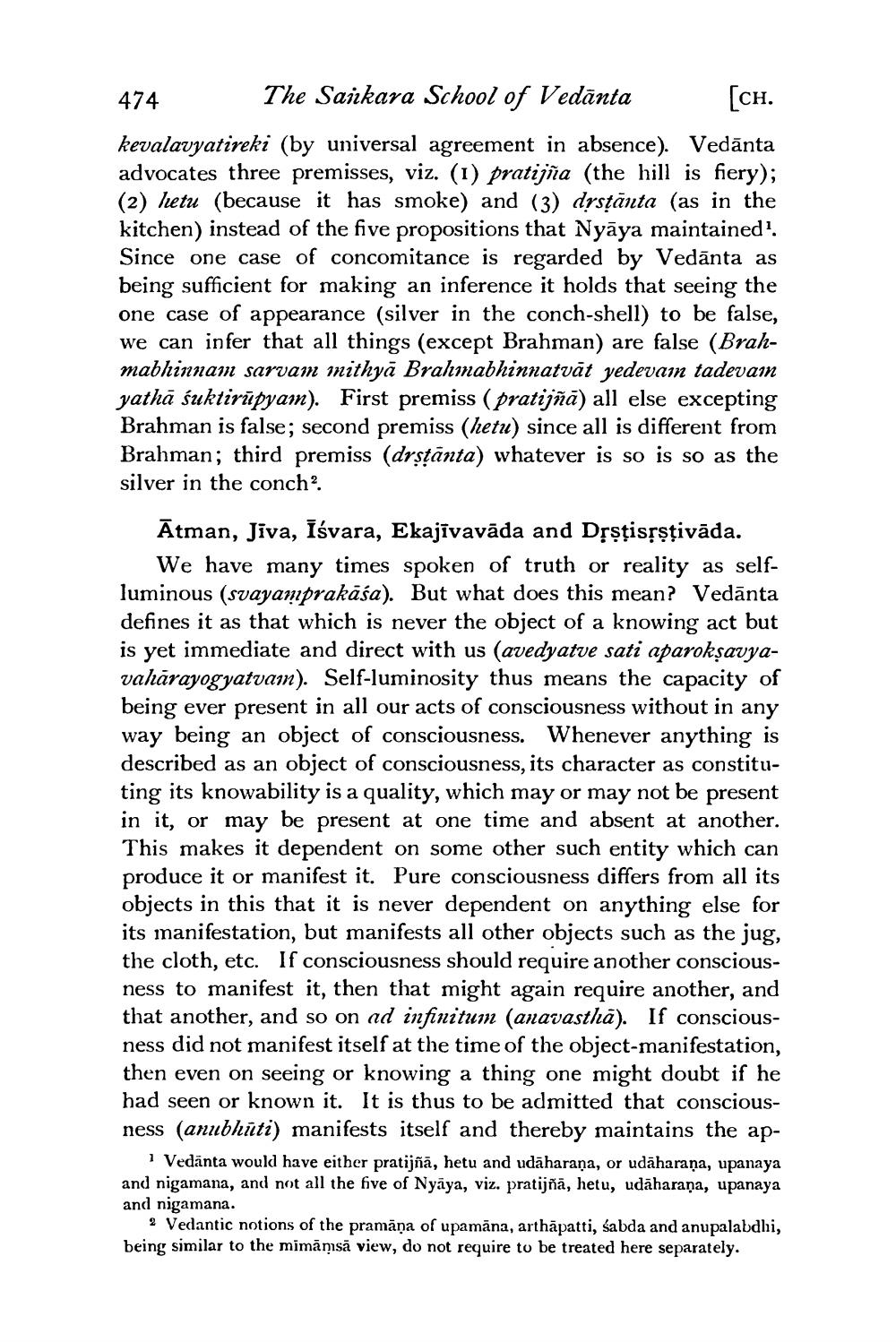________________
474
The Saikara School of Vedānta [ch. kevalavyatireki (by universal agreement in absence). Vedānta advocates three premisses, viz. (1) pratijña (the hill is fiery); (2) letu (because it has smoke) and (3) drsțānta (as in the kitchen) instead of the five propositions that Nyāya maintained. Since one case of concomitance is regarded by Vedānta as being sufficient for making an inference it holds that seeing the one case of appearance (silver in the conch-shell) to be false, we can infer that all things (except Brahman) are false (Brahmabhinnam sarvam mithyā Brahmabhinnatvāt yedevam tadevam yathā śuktirūpyam). First premiss (pratijñā) all else excepting Brahman is false; second premiss (hetu) since all is different from Brahman; third premiss (drstānta) whatever is so is so as the silver in the conch?
Ātman, Jiva, Isvara, Ekajīvavāda and Dşstisșşțivāda.
We have many times spoken of truth or reality as selfluminous (svayamprakāśa). But what does this mean? Vedānta defines it as that which is never the object of a knowing act but is yet immediate and direct with us (avedyatve sati aparoksavyavahārayogyatvam). Self-luminosity thus means the capacity of being ever present in all our acts of consciousness without in any way being an object of consciousness. Whenever anything is described as an object of consciousness, its character as constituting its knowability is a quality, which may or may not be present in it, or may be present at one time and absent at another. This makes it dependent on some other such entity which can produce it or manifest it. Pure consciousness differs from all its objects in this that it is never dependent on anything else for its manifestation, but manifests all other objects such as the jug, the cloth, etc. If consciousness should require another consciousness to manifest it, then that might again require another, and that another, and so on ad infinituin (anavasthā). If consciousness did not manifest itself at the time of the object-manifestation, then even on seeing or knowing a thing one might doubt if he had seen or known it. It is thus to be admitted that consciousness (anubhūti) manifests itself and thereby maintains the ap
i Vedānta would have either pratijñā, hetu and udāharaṇa, or udāharaņa, upanaya and nigamana, and not all the five of Nyāya, viz. pratijñā, hetu, udāharaṇa, upanaya and nigamana.
2 Vedantic notions of the pramāņa of upamāna, arthāpatti, Sabda and anupalabdhi, being similar to the mimāmsā view, do not require to be treated here separately.




